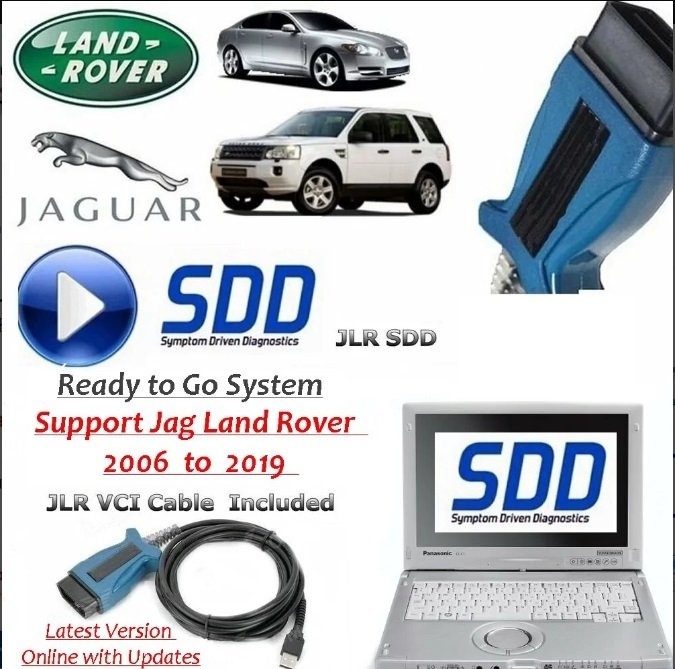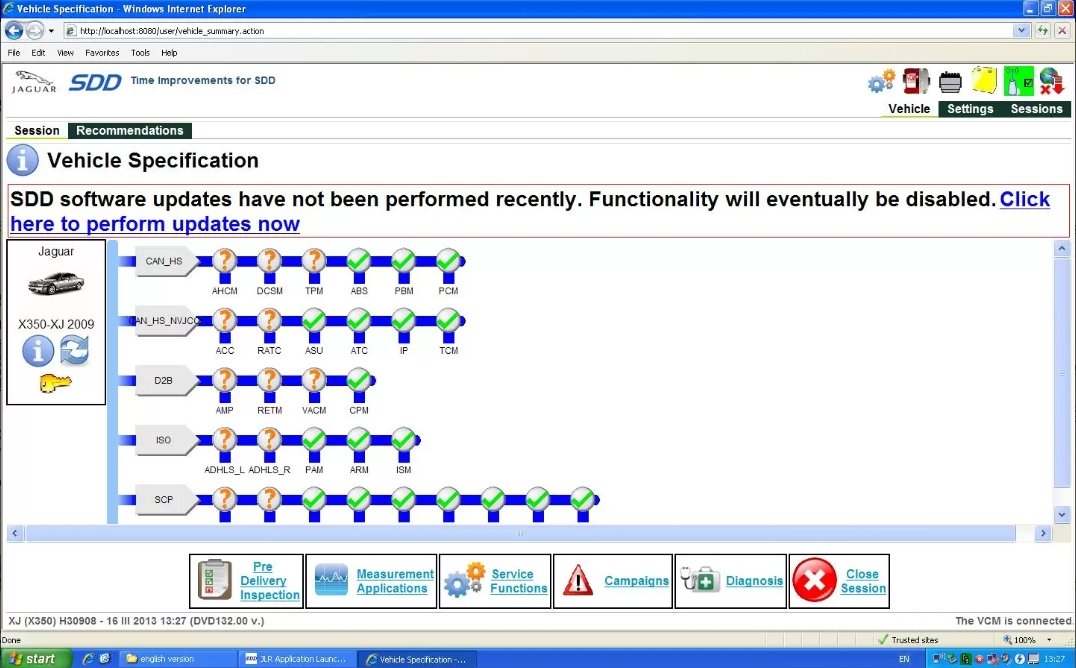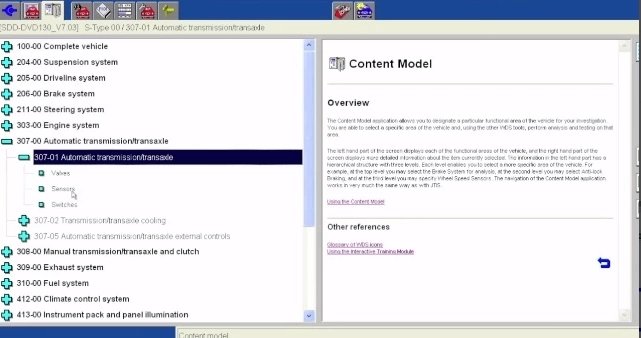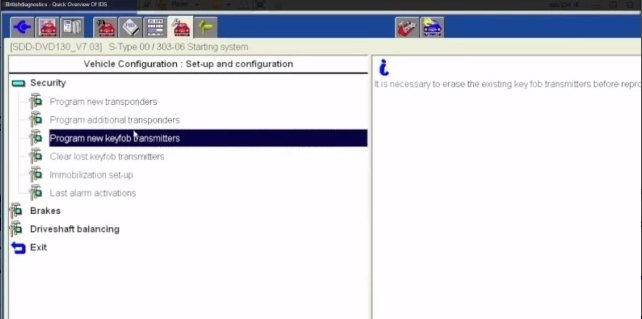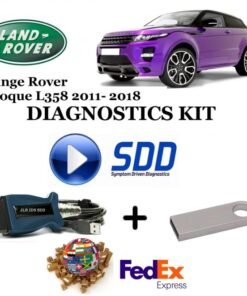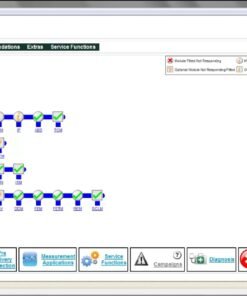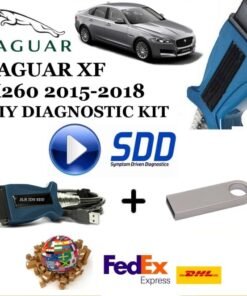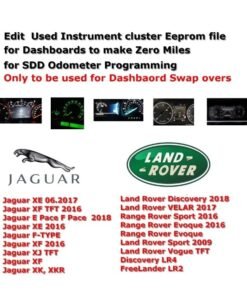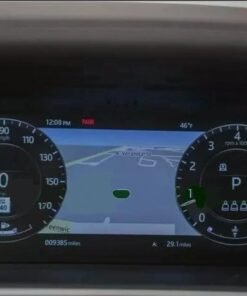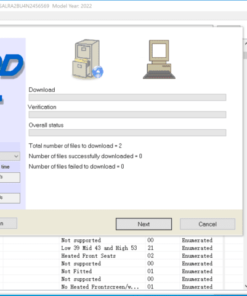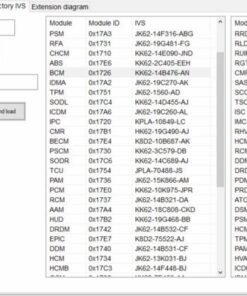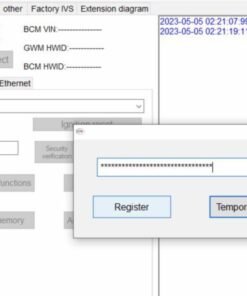IDS SDD JLR + Cable+Laptop Diagnostics Kit for Jaguar Land Rover
$877.00 – $1,177.00
$850.69 – $1,141.69
Check out the Latest version of OEM Dealer software packages Mongoose Pro Jaguar-Land Rover (JLR) Good Laptop All ready loaded and pre-configured has best of both words take the headache out of spending hours getting the software running Global shipping with custom Configuration options.
| Qty Discount | Qty Range | Discount |
|---|---|---|
| Bulk/tiered discount | 1 - 5 | 3% $850.69 |
| Bulk/tiered discount | 6 - 10 | 5% $833.15 |
IDS SDD JLR + Cable+Laptop Diagnostics Kit for Jaguar Land Rover
Package Includes:
- SDD Read clear Codes DTc Only
- Used Laptop + V131 Native + V138 Virtual Machine (standard configuration)
- JLR VCI Cable
Check out the Latest version of OEM Dealer software packages
Mongoose Pro Jaguar-Land Rover (JLR)
Good condition used laptop and already loaded and pre-configured software, have the best of both worlds! Take the headache out of spending hours getting the software running! Global shipping with custom configuration options.
- Jaguar-Land Rover has approved the Mongoose Pro
- JLR as a supported interface and will offer it directly to Jaguar and Land Rover dealerships as the factory diagnostics tool.
- Mongoose Pro JLR is a low-cost VCI for factory diagnostics and reprogramming.
- Diagnostics Trouble Codes
- Data Lists
- Active Tests
- Monitor
- Utility tests
- Reprogramming
Key Features
- USB support for HSCAN, MSCAN, J1850PWM, ROSCO, and ISO9141/KWP2000 vehicles
- Simple packaging with electronics contained inside the cable.
- Unique Advantages: Jaguar and Land Rover approved low-cost interface
- Bus Protocols
- CAN Bus (capable of ISO 15765, GMLAN, and ISO14229)
- Medium Speed CAN
- J1850PWM / SCP
- ISO9141 / KWP2000
- ROSCO
- Other
- J2534 and J2534-1 compliant device driver
- Commercial Range (0 to +70 C)
- Dimensions: 3″ x 1.75″
- Operating Voltage: Bus-powered by USB
- Host Interface: Full-speed 12 Mbps USB 2.0 with J2534 device Driver
IDS (Integrated Diagnostic Software)
IDS was used by Jaguar dealerships for vehicles manufactured pre-2005. Land Rover also used IDS however the interface we can only supply will only work with the Jaguar side of IDS.
The user interface does look dated compared to the newer SDD however it is still a very reliable piece of software that is still used in the Jaguar dealerships throughout.
Our IDS software is only suitable for Jaguars pre-2005, it is not suitable for any Land Rover pre-2005.
It allows you to do the following: Fault Code Reading / Resetting analysis for repairs
- Service Lights
- Read / Clear / Reset Air bag Light codes
- Read / Clear / Reset ABS Light codes
- Programming Modules
- Programming personalization like ride height or folding wing mirrors.
- Activate pumps for brake bleeding
- Program new DSC units
- Program ABS Units
SDD (Symptom Driven Diagnostics)
SDD is the latest development by JLR in vehicle diagnostics. Designed to be easy to use and extremely efficient in fault finding. Conventional diagnostic systems read fault codes and offer them to the end user. It is then up the the end user to analyse the codes and find the vehicle fault from the data that has been provided.
SDD instead asks the end user about the fault with the vehicle progresses to analyze the fault codes and offers the solution to fix the vehicle on a relevance to likely ratio.
Should you wish to intervene and only see the fault codes then this option is open to the end user but keep in mind, that SDD was developed to recommend the repairs.
Alongside diagnostics, the service functions allow vehicle and module programming and vehicle customization.
A selection of what can be done with SDD:
- Fault Code Reading / Resetting analysis for repairs
- Service Lights
- Read / Clear / Reset Air bag Light codes
- Read / Clear / Reset ABS Light codes
- Programming Modules
- Clearing adaptions
- V130 Programming extra keys
- Programming personalization like ride height or folding wing mirrors.
- DPF Regeneration
- Activate pumps for brake bleeding
- Adjust vehicle heights
- Program new DSC units
Making SDD effective when selecting Vehicle symptoms for your Jaguar & Land Rover
SDD is designed to link DTCs and provide recommendations based on customer-facing and/or the most significant symptoms. Do not try to short-cut or refine the customer’s reported symptoms based on expected failures. If the primary or most obvious Customer-facing symptom is an MIL or message center warning, those symptoms MUST be included in your symptom selection inputs using SDD. While it might seem logical when selecting ‘Air Suspension is inoperative’ that there is no need to select the symptom ‘Message center warning’, it is important to do so. Otherwise, SDD may exclude DTCs or recommendations that relate to failures known to trigger a warning message or MIL. Be sure to select any additional symptoms observed during a road test in addition to the most obvious symptoms and customer-reported info. Altering the selected symptoms adjusts the filtering of the DTCs. Selecting fewer symptoms makes the filter ‘coarser’ while selecting more symptoms makes the filter ‘finer’.
- If very few or no DTCs and recommendations are listed, try restricting your symptom selections to Level 3 in the symptom tree.
- If too many DTCs or recommendations are listed, try selecting symptoms to Level 4 or 5, using care not to select an inaccurate symptom.
- To be sure that you are only working with your intended symptom list: open the ‘Selected Symptoms’ drop-down box at the upper right portion of the Symptom Selection tab to review all currently selected symptoms. Avoiding Common SDD Symptom Selection Errors Powertrain > Engine system > Starting system > Start-stop system: Note that the Start-Stop System is a fuel-conserving technology used on diesel vehicles sold in other markets. This is not associated with the ‘Start Button’ used to actuate the ignition on Smart Key-equipped vehicles. Warning Lamps, Status Lamps, and Message Center Use care when entering symptoms related to customer complaints of MIL lights and warnings. When a light and a message are reported or observed, both of these symptoms must be included. When viewing the symptom categories within the Electrical > Instrument Cluster section, there are 3 classes of ‘driver information’ symptoms:
- Warning Lamps (red)
Warning Messages (in Message Center)
Status Lamps (yellow)
While it is easy to distinguish between a Warning Message and a Warning Lamp that is currently active, if the problem is intermittent, the service writer must determine through careful questioning of the customer if a warning lamp, warning message, or both were displayed. Also, not every MIL is considered a Warning Lamp since some indicators on the instrument cluster are used to indicate the status of a system. Examples of Status Lamps include the Passenger Seat Occupancy Status Lamp and the TPMS Status Lamp. Using the Passenger Seat Occupancy Status Lamp as an example: this light is only used to indicate the status of the passenger seat. When lit, it simply indicates that the SRS system has determined that based on the current inputs, the passenger restraints will not be deployed. It does not mean the system has detected a failure that requires a driver warning. For this reason, the lamp is classified as a Status Lamp. Similarly, the amber TPMS indicator is used to inform the driver that the tire pressure requires attention. While this light may remain lit when a system malfunction exists, it is considered a Status Lamp since its primary function is to inform the driver of the tire pressure status. Recommendation: When selecting SDD symptoms for lamps that are primarily considered a Status Lamp, but are also known to have a secondary function as a Warning Lamp, be sure to select the symptoms under both categories in the symptom selection map.
New Diagnostic Process
IDS has been updated to provide a clear diagnostic strategy and tool navigation path to the technician. With Symptom Driven Diagnostics (SDD), the technician can begin the diagnostic process by identifying the specific symptoms of a customer concern using Symptom Maps incorporated into the
SDD software. A diagnostic strategy can then be structured around only the DTCs that are relevant to those symptoms. SDD can also provide links to other service information to support the diagnostic process.
Symptom Maps
Symptom Maps are incorporated into the SDD software, allowing the technician to target DTCs and diagnostic routines based on specific symptoms. Symptom Maps are organized by major vehicle system as follows:
- Module Communications Network
- Chassis
- Powertrain
- Electrical
- Body
Maps are then further structured by System and Sub-System details to provide lists of possible symptoms at 2 levels.
Symptom Maps are used by SDD in conjunction with DTCs. To ensure the best possible recommendations to achieve FRFT repairs,
the technician must input ALL vehicle symptoms that match the customer's concern.
The Integrated Diagnostic System (IDS) core architecture dates from 1999 and incorporates elements going back as far as 1995. In the meantime, vehicle technology has become more complex and the number of vehicle variants has increased. Current vehicle systems support up to 4,000 different Diagnostic Trouble Codes (DTCs), which increases the complexity of diagnostics. The technician now needs to diagnose systems, not merely individual components. Without a clear strategy for a repair process, a technician faced with up to 40 DTCs at the start of an IDS session can easily lose confidence in the diagnostic tool.
Feedback data from dealerships shows inconsistent methods of fault diagnosis with underutilization of the IDS capabilities. This has resulted in high ‘No Fault Found’ repair rates, difficulty in achieving Fixed Right First Time (FRFT) repairs, and an increase in the time that a customer’s vehicle is off the road.
Why it’s useful to have your own Jaguar & Land Rover Diagnostic kit?
In the last 7 years the diagnostics industry has boomed. Vehicles have become more complicated with more electrics and fast-moving technology piled in. The result of having all these “mini computers” running in your vehicle is that when it goes wrong they require another computer to diagnose what is wrong and fix them.
The Jaguar and Land Rover Diagnostic kits are suited to various people.
If you plan on doing your repairs on your JLR vehicle then it goes without saying that you do need your diagnostic kit. Being able to have access to something like IDS & SDD when finding out which part has failed is crucial. It speeds up your diagnostics and more importantly, makes it far more accurate. With a good quality diagnostic kit, you can avoid replacing parts unnecessarily in the hope of curing your fault.
CF53/CF54/CF-D1 Toughbook available in options
JLR IDS SDD PATHFINDER YEARS COVERED
- 2019
- 2018
- 2017
- 2016
- 2015
- 2014
- 2013
- 2012
- 2011
- 2010
- 2009
- 2008
- 2007
- 2006
- 2005
- 2004
- 2003
- 2002
- 2001
- 2000
- 1999
- 1998
- 1997
- 1996
JLR IDS SDD PATHFINDER SOFTWARE FEATURES
- DTC Code Retrieval:
Retrieve OE DTC with code Definition
Link DTC to service information
Customizable PID display - Data Logging:
Body
Chassis
Electrical
Powertrain
Pressure/Vacuum Tests - Bi-Directional tests:
Body
Chassis
Electrical
Powertrain - Network Test:
CAN
J1850/ISO9141/SCP - Module Programming:
Programmable Module Installation (PMI) procedures
Module Reprogramming (Reflash)
Coding
Supplemental restraints initialization
Programmable Parameters ( ability to change service settings ie, tire size, personality, customer convenience, etc.) - Body Controls:
Anti-theft System Functions
Remote Keyless Entry
Restraints (supplemental restraints and seat belts) - Chassis Tools:
ABS Service Bleed
ABS/ Brake system functions
IVD Initialization Sequence
Ride Height Calibration ( for vehicles with pneumatic or hydraulic ride height controls)
Cruise Control System tests
Tire pressure monitor functions
Electronic Ride Control - Electrical Tools:
Charging System Tests
Parking Aid Tests
Audio - Powertrain Tools:
EVAP Evaporative Emission Control System
Fuel System Test/Relative Injector Flow Test
Bi-directional control of fuel components
Bi-directional Ignition System control
Power Balance Test
Transmission bi-directional Tests
Engine Checks and OBD Tests (Drive Cycle, Mode 01, Mode 06 & Mode 09)
EGR Test - Digital Multimeter:
Basic DMM functions
Current measurements (50 Amps/500 Amps)
Pressure/Vacuum measurements - PROGRAMMING KEYS & TRANSPONDERS:
YES SUPPORTED - IDS Legacy Tools for Jaguars 1997 -2005:
V131 Supports IDS for Pre-2006 Vehicles
YES SUPPORTED
| Options | CF-53, CF-54, CF-D1 |
|---|
Related products
Range Rover Evoque
Symptom Driven Diagnostics SDD JLR Diy Kit for Evoque L358 2012 – 2018 Land Rover
$251.23 – $503.43
$1,618.93 – $1,871.13
$66.93 – $619.83
$561.63 – $872.03
$14.54 – $173.63
$270.63 – $2,695.63


